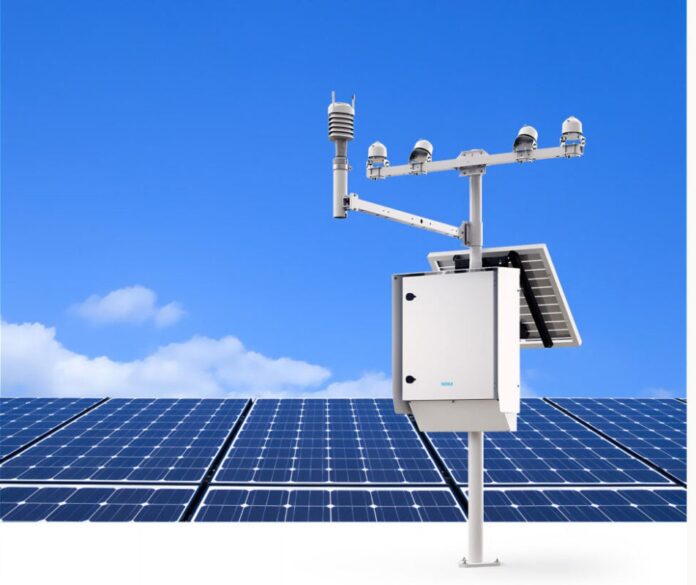Weather has always played a vital role in shaping human life, from agriculture to transportation and even public safety. Over the years, the science of meteorology has advanced remarkably, allowing us to predict and understand weather conditions with greater accuracy. One of the most significant innovations in this field is the development of modern automatic weather stations — intelligent systems that continuously monitor, record, and transmit weather data without the need for constant human intervention.
What Is an Automatic Weather Station?
An automatic weather station is a technologically advanced setup designed to collect and transmit environmental data in real-time. These stations are equipped with multiple sensors that measure a variety of meteorological parameters such as temperature, humidity, atmospheric pressure, wind speed, direction, solar radiation, and rainfall. Unlike manual weather stations, these systems function autonomously, ensuring continuous data collection and transmission even in remote or extreme environments.
By automating the process, meteorologists, researchers, and environmental agencies can receive accurate and timely weather information to make informed decisions. The collected data can also be transmitted to central databases or cloud platforms for further analysis, forecasting, and modeling.
Components of a Modern Weather Station
An automatic weather station consists of several integrated components, each playing a crucial role in data collection and processing:
- Sensors and Instruments:
These are the heart of the system. Each sensor is responsible for measuring specific weather parameters such as temperature (using thermometers), humidity (via hygrometers), pressure (barometers), and wind (anemometers). - Data Logger:
The data logger serves as the brain of the weather station. It collects and stores data from various sensors, processes the readings, and prepares the information for transmission. - Communication System:
Modern weather stations use GSM, satellite, or internet-based communication technologies to transmit real-time data to remote monitoring centers. - Power Supply:
Many stations operate in remote areas, so they often rely on solar panels with battery backups to ensure continuous operation. - Protective Enclosures:
The sensors and electronics are usually housed in weatherproof enclosures to protect them from dust, rain, and other environmental factors.
Key Applications Across Different Sectors
Automatic weather stations are used in numerous sectors due to their accuracy and reliability. Some of the major applications include:
1. Agriculture
Farmers rely heavily on accurate weather data to plan irrigation schedules, pest control, and harvesting activities. Real-time information on temperature, rainfall, and humidity helps optimize crop yield and reduce losses caused by unpredictable weather conditions.
2. Aviation
In aviation, weather stations play a vital role in ensuring flight safety. Data on wind speed, visibility, and atmospheric pressure is critical for takeoff, landing, and route planning.
3. Marine and Coastal Monitoring
Automatic stations installed near coastlines and offshore platforms provide essential data about sea conditions, tides, and storms, aiding maritime navigation and coastal management.
4. Environmental Research
Scientists use weather stations for long-term climate monitoring and environmental studies. The data contributes to understanding climate change trends and modeling future scenarios.
5. Disaster Management
Early warning systems for floods, cyclones, and storms depend on continuous weather monitoring. Automatic stations provide real-time updates that help authorities prepare and respond quickly to natural disasters.
Advantages of Automatic Weather Stations
The shift from manual to automated weather observation has brought numerous benefits. Some of the most notable advantages include:
- High Accuracy:
Automated sensors ensure consistent and precise readings, minimizing human errors. - Continuous Monitoring:
Unlike manual systems, automatic stations operate 24/7, even in adverse weather conditions. - Remote Accessibility:
The data collected can be accessed remotely in real-time, making it easier for researchers and decision-makers to respond quickly. - Cost-Effective in the Long Run:
Although the initial setup cost may be high, maintenance is minimal, and the system reduces the need for continuous human supervision. - Scalability and Integration:
Modern systems can easily integrate with other data networks or IoT-based platforms, enhancing their overall utility.
How Automatic Weather Stations Contribute to Climate Science
With climate change becoming a pressing global concern, the role of automatic weather stations has expanded beyond short-term forecasting. Continuous data collection over long periods provides insights into temperature trends, precipitation patterns, and atmospheric behavior.
Researchers can use this data to study microclimates, urban heat islands, and the long-term effects of greenhouse gases. By identifying anomalies or shifts in weather behavior, governments and organizations can take proactive steps toward environmental sustainability and climate adaptation strategies.
Maintenance and Calibration of Weather Stations
To ensure reliability and accuracy, automatic weather stations require regular calibration and maintenance. Sensor drift, dust accumulation, and exposure to harsh elements can gradually affect data precision. Routine checks, sensor cleaning, and periodic calibration help maintain data quality.
In addition, modern systems often come equipped with self-diagnostic features that alert technicians in case of sensor malfunction or data irregularities. Preventive maintenance schedules are therefore essential to ensure continuous, error-free operation.
Future Innovations in Weather Monitoring
Technology continues to evolve, and so do automatic weather stations. The integration of artificial intelligence (AI), Internet of Things (IoT), and satellite-based communication systems is revolutionizing how weather data is collected and analyzed.
AI algorithms can now predict localized weather phenomena by learning from large datasets, while IoT connectivity allows multiple stations to communicate with each other for regional accuracy. Future systems may also include drones equipped with micro-sensors, providing real-time atmospheric data from various altitudes.
These innovations are paving the way for smarter cities, sustainable agriculture, and more effective disaster management systems.
Final Thoughts
Automatic weather stations have become an indispensable part of modern meteorology and environmental science. Their ability to provide continuous, accurate, and real-time data has transformed the way we understand and respond to weather and climate patterns. As technology continues to advance, these systems will play an even greater role in promoting sustainability, safety, and informed decision-making worldwide.
Reliable weather data is no longer just a scientific requirement—it is a foundation for building a more resilient and informed society.

